Charis Mesaritakis
Neuromorphic Imaging Flow Cytometry combined with Adaptive Recurrent Spiking Neural Networks
May 16, 2025Abstract:We present an experimental imaging flow cytometer using a 1 {\mu}s temporal resolution event-based CMOS camera, with data processed by adaptive feedforward and recurrent spiking neural networks. Our study classifies PMMA particles (12, 16, 20 {\mu}m) flowing at 0.7 m/s in a microfluidic channel. Processing of experimental data highlighted that spiking recurrent networks, including LSTM and GRU models, achieved 98.4% accuracy by leveraging temporal dependencies. Additionally, adaptation mechanisms in lightweight feedforward spiking networks improved accuracy by 4.3%. This work outlines a technological roadmap for neuromorphic-assisted biomedical applications, enhancing classification performance while maintaining low latency and sparsity.
Photonic Neuromorphic Accelerator for Convolutional Neural Networks based on an Integrated Reconfigurable Mesh
May 10, 2024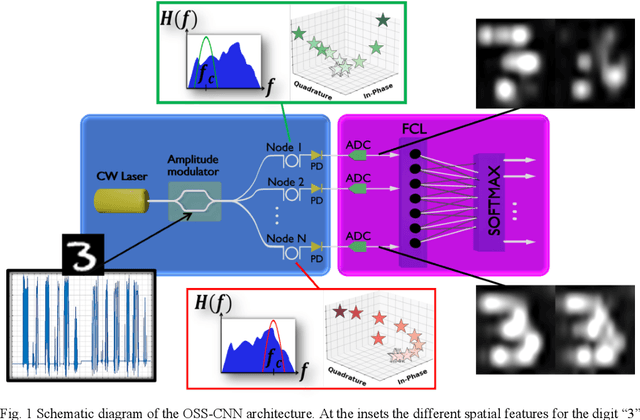
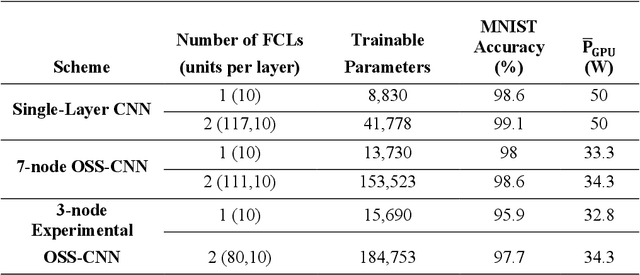
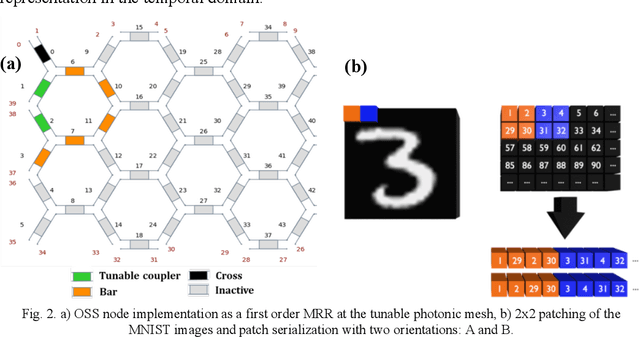
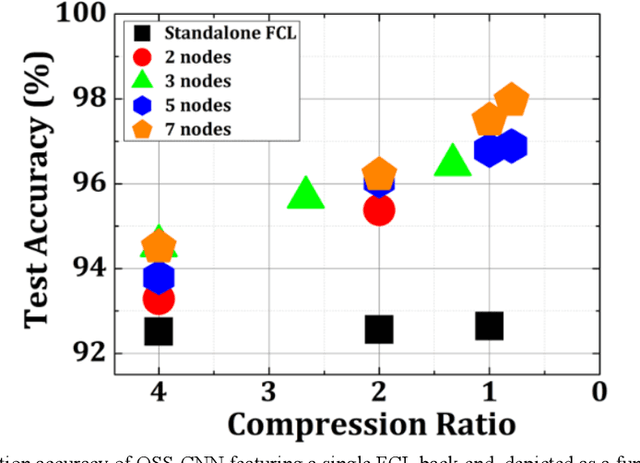
Abstract:In this work, we present and experimentally validate a passive photonic-integrated neuromorphic accelerator that uses a hardware-friendly optical spectrum slicing technique through a reconfigurable silicon photonic mesh. The proposed scheme acts as an analogue convolutional engine, enabling information preprocessing in the optical domain, dimensionality reduction and extraction of spatio-temporal features. Numerical results demonstrate that utilizing only 7 passive photonic nodes, critical modules of a digital convolutional neural network can be replaced. As a result, a 98.6% accuracy on the MNIST dataset was achieved, with a power consumption reduction of at least 26% compared to digital CNNs. Experimental results confirm these findings, achieving 97.7% accuracy with only 3 passive nodes.
Photonic Neuromorphic Accelerators for Event-Based Imaging Flow Cytometry
Apr 16, 2024Abstract:In this work, we present experimental results of a high-speed label-free imaging cytometry system that seamlessly merges the high-capturing rate and data sparsity of an event-based CMOS camera with lightweight photonic neuromorphic processing. This combination offers high classification accuracy and a massive reduction in the number of trainable parameters of the digital machine-learning back-end. The photonic neuromorphic accelerator is based on a hardware-friendly passive optical spectrum slicing technique that is able to extract meaningful features from the generated spike-trains. The experimental scenario comprises the discrimination of artificial polymethyl methacrylate calibrated beads, having different diameters, flowing at a mean speed of 0.01m/sec. Classification accuracy, using only lightweight, digital machine-learning schemes has topped at 98.2%. On the other hand, by experimentally pre-processing the raw spike data through the proposed photonic neuromorphic spectrum slicer we achieved an accuracy of 98.6%. This performance was accompanied by a reduction in the number of trainable parameters at the classification back-end by a factor ranging from 8 to 22, depending on the configuration of the digital neural network.
Unconventional Computing based on Four Wave Mixing in Highly Nonlinear Waveguides
Feb 14, 2024



Abstract:In this work we numerically analyze a photonic unconventional accelerator based on the four-wave mixing effect in highly nonlinear waveguides. The proposed scheme can act as a fully analogue system for nonlinear signal processing directly in the optical domain. By exploiting the rich Kerr-induced nonlinearities, multiple nonlinear transformations of an input signal can be generated and used for solving complex nonlinear tasks. We first evaluate the performance of our scheme in the Santa-Fe chaotic time-series prediction. The true power of this processor is revealed in the all-optical nonlinearity compensation in an optical communication scenario where we provide results superior to those offered by strong machine learning algorithms with reduced power consumption and computational complexity. Finally, we showcase how the FWM module can be used as a reconfigurable nonlinear activation module being capable of reproducing characteristic functions such as sigmoid or rectified linear unit.
All-Optical, Reconfigurable and Power Independent Neural Activation Function by Means of Phase Modulation
Feb 06, 2024Abstract:In this work, we present numerical results concerning an integrated photonic non-linear activation function that relies on a power independent, non-linear phase to amplitude conversion in a passive optical resonator. The underlying mechanism is universal to all optical filters, whereas here, simulations were based on micro-ring resonators (MRRs). Investigation revealed that the photonic neural node can be tuned to support a wide variety of continuous activation functions that are relevant to the neural network architectures, such as the sigmoid and the softplus functions. The proposed photonic node is numerically evaluated in the context of time delayed reservoir computing (TDRC) scheme, targeting the one-step ahead prediction of the Santa Fe series. The proposed phase to amplitude TDRC is benchmarked versus the conventional amplitude based TDRC, showcasing a performance boost by one order of magnitude.
Integrated Photonic Accelerator Based on Optical Spectrum Slicing for Convolutional Neural Networks
Mar 18, 2023



Abstract:In this work we numerically analyze a passive photonic integrated neuromorphic accelerator based on hardware-friendly optical spectrum slicing nodes. The proposed scheme can act as a fully analogue convolutional layer, preprocessing information directly in the optical domain. The proposed scheme allows the extraction of meaningful spatio-temporal features from the incoming data, thus when used prior to a simple fully connected digital single layer network it can boost performance with negligible power consumption. Numerical simulations using the MNIST dataset confirmed the acceleration properties of the proposed scheme, where 10 neuromorphic nodes can replace the convolutional layers of a sophisticated LeNet-5 network, thus reducing the number of total floating point operations per second (FLOPS) by 98% while offering a 97.2% classification accuracy.
Reservoir Computing based on Mutually Injected Phase Modulated Semiconductor Lasers as a monolithic integrated hardware accelerator
May 22, 2021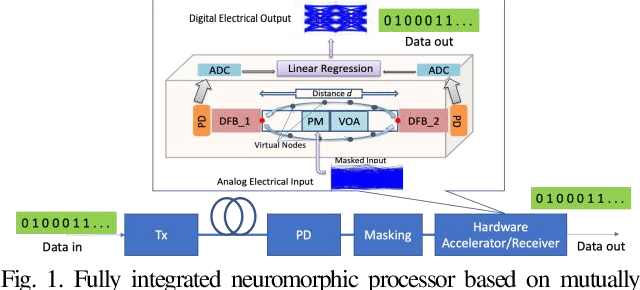

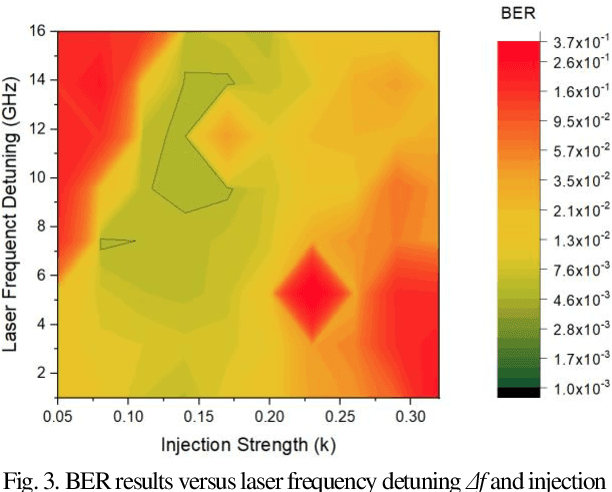
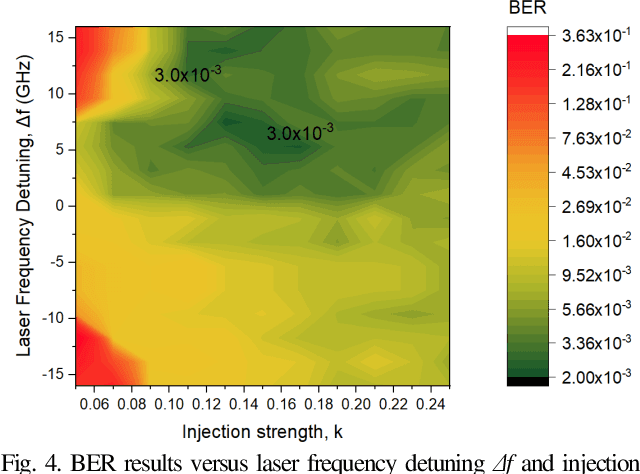
Abstract:In this paper we propose and numerically study a neuromorphic computing scheme that applies delay-based reservoir computing in a laser system consisting of two mutually coupled phase modulated lasers. The scheme can be monolithic integrated in a straightforward manner and alleviates the need for external optical injection, as the data can be directly applied on the on-chip phase modulator placed between the two lasers. The scheme also offers the benefit of increasing the nodes compared to a reservoir computing system using either one laser under feedback or laser under feedback and optical injection. Numerical simulations assess the performance of the integrated reservoir computing system in dispersion compensation tasks in short-reach optical communication systems. We numerically demonstrate that the proposed platform can recover severely distorted 25 Gbaud PAM-4 signals for transmission distances exceeding 50km and outperform other competing delay-based reservoir computing systems relying on optical feedback. The proposed scheme, thanks to its compactness and simplicity, can play the role of a monolithic integrated hardware accelerator in a wide range of application requiring high speed real time processing.
Performance and Complexity Analysis of bi-directional Recurrent Neural Network Models vs. Volterra Nonlinear Equalizers in Digital Coherent Systems
Mar 03, 2021
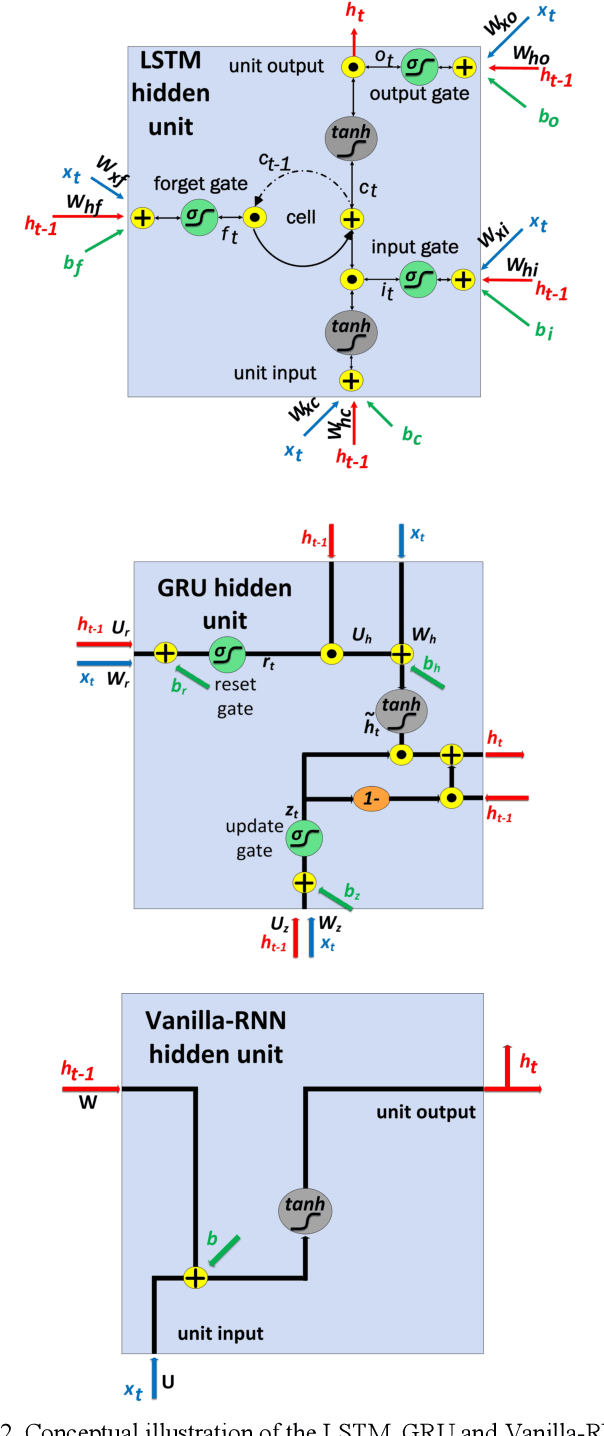
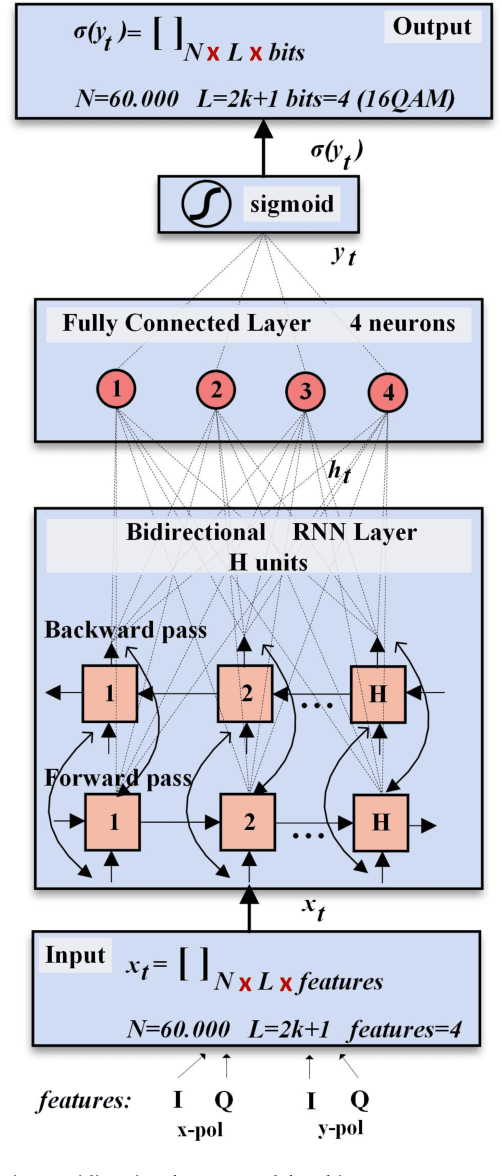

Abstract:We investigate the complexity and performance of recurrent neural network (RNN) models as post-processing units for the compensation of fibre nonlinearities in digital coherent systems carrying polarization multiplexed 16-QAM and 32-QAM signals. We evaluate three bi-directional RNN models, namely the bi-LSTM, bi-GRU and bi-Vanilla-RNN and show that all of them are promising nonlinearity compensators especially in dispersion unmanaged systems. Our simulations show that during inference the three models provide similar compensation performance, therefore in real-life systems the simplest scheme based on Vanilla-RNN units should be preferred. We compare bi-Vanilla-RNN with Volterra nonlinear equalizers and exhibit its superiority both in terms of performance and complexity, thus highlighting that RNN processing is a very promising pathway for the upgrade of long-haul optical communication systems utilizing coherent detection.
Spatial Photonic Reservoir Computing based on Non-Linear Phase-to-Amplitude Conversion in Micro-Ring Resonators
Jan 12, 2021Abstract:We present a photonic reservoir computing, relying on a non-linear phase-to-amplitude mapping process, able to classify in real-time multi-Gbaud time traces subject to transmission effects. This approach delivers an all-optical, low-power neuromorphic dispersion compensator.
Fabry-Perot Lasers as Enablers for Parallel Reservoir Computing
May 04, 2020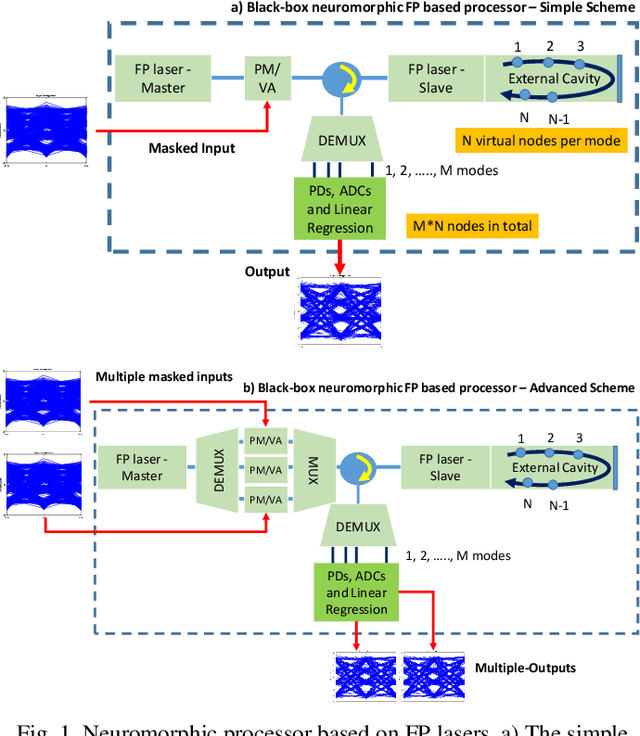
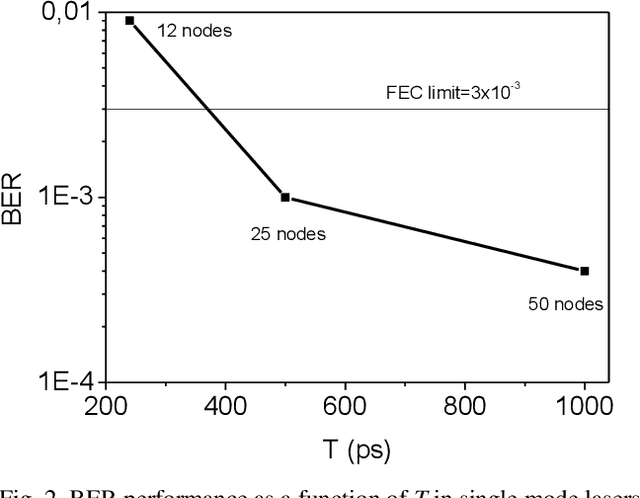
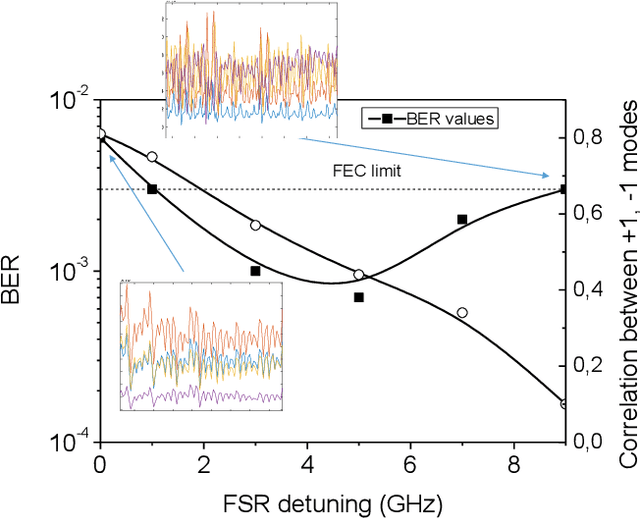
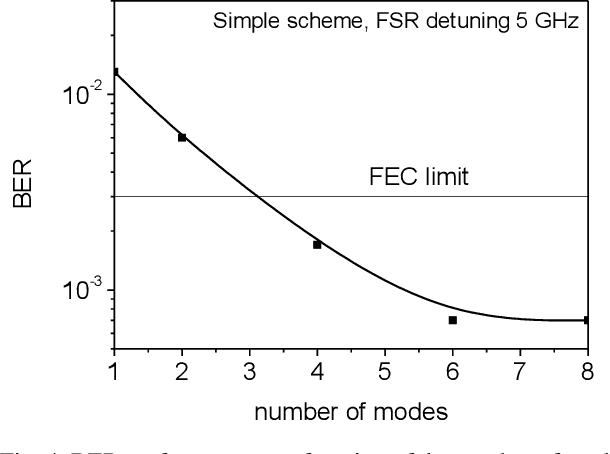
Abstract:We introduce the use of Fabry-Perot (FP) lasers as potential neuromorphic computing machines with parallel processing capabilities. With the use of optical injection between a master FP laser and a slave FP laser under feedback we demonstrate the potential for scaling up the processing power at longitudinal mode granularity and perform real-time processing for signal equalization in 25 Gbaud intensity modulation direct detection optical communication systems. We demonstrate the improvement of classification performance as the number of nodes increases and the capability of simultaneous processing of arbitrary data streams. Extensive numerical simulations show that up to 8 longitudinal modes in typical Fabry-Perot lasers can be leveraged so as to enhance classification performance.
 Add to Chrome
Add to Chrome Add to Firefox
Add to Firefox Add to Edge
Add to Edge